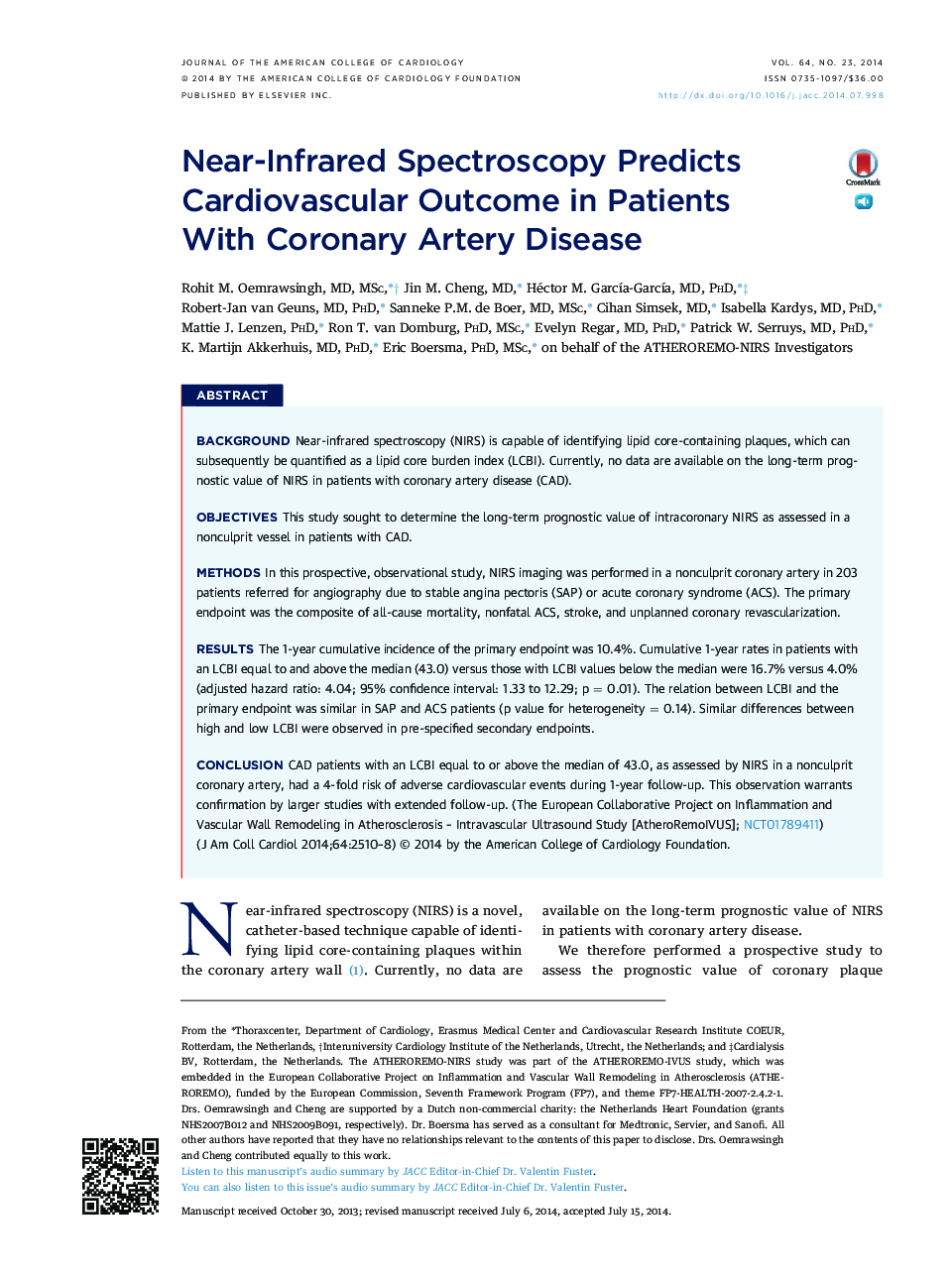| Article ID | Journal | Published Year | Pages | File Type |
|---|---|---|---|---|
| 2943981 | Journal of the American College of Cardiology | 2014 | 9 Pages |
BackgroundNear-infrared spectroscopy (NIRS) is capable of identifying lipid core-containing plaques, which can subsequently be quantified as a lipid core burden index (LCBI). Currently, no data are available on the long-term prognostic value of NIRS in patients with coronary artery disease (CAD).ObjectivesThis study sought to determine the long-term prognostic value of intracoronary NIRS as assessed in a nonculprit vessel in patients with CAD.MethodsIn this prospective, observational study, NIRS imaging was performed in a nonculprit coronary artery in 203 patients referred for angiography due to stable angina pectoris (SAP) or acute coronary syndrome (ACS). The primary endpoint was the composite of all-cause mortality, nonfatal ACS, stroke, and unplanned coronary revascularization.ResultsThe 1-year cumulative incidence of the primary endpoint was 10.4%. Cumulative 1-year rates in patients with an LCBI equal to and above the median (43.0) versus those with LCBI values below the median were 16.7% versus 4.0% (adjusted hazard ratio: 4.04; 95% confidence interval: 1.33 to 12.29; p = 0.01). The relation between LCBI and the primary endpoint was similar in SAP and ACS patients (p value for heterogeneity = 0.14). Similar differences between high and low LCBI were observed in pre-specified secondary endpoints.ConclusionCAD patients with an LCBI equal to or above the median of 43.0, as assessed by NIRS in a nonculprit coronary artery, had a 4-fold risk of adverse cardiovascular events during 1-year follow-up. This observation warrants confirmation by larger studies with extended follow-up. (The European Collaborative Project on Inflammation and Vascular Wall Remodeling in Atherosclerosis – Intravascular Ultrasound Study [AtheroRemoIVUS]; NCT01789411)
